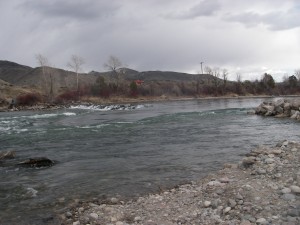Henry’s Fork 6-10-14
The lower river below Ashton Dam is beginning to shape up with PMDs emerging in good numbers and golden stoneflies appearing. Look for green drakes to start here any day. The same for gray drakes in the Chester backwaters. The Warm River to Ashton reach is fishing well for those using caddis life cyle patterns, rubber leg nymphs, and streamers in the evening. At Last Chance PMDs are making an appearance and some march browns remain. The big stoneflies have just about finished their emergence with a few remaining in Box Canyon and a Coffee Pot. Waters throughout the river below Island Park Dam are low as Island Park Reservoir is being filled. This means warmer water making for earlier emergences. Henry’s Lake is full with only 14 cfs coming into the Outlet. For now fishing there is slow.



